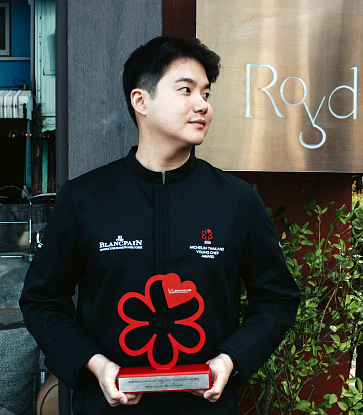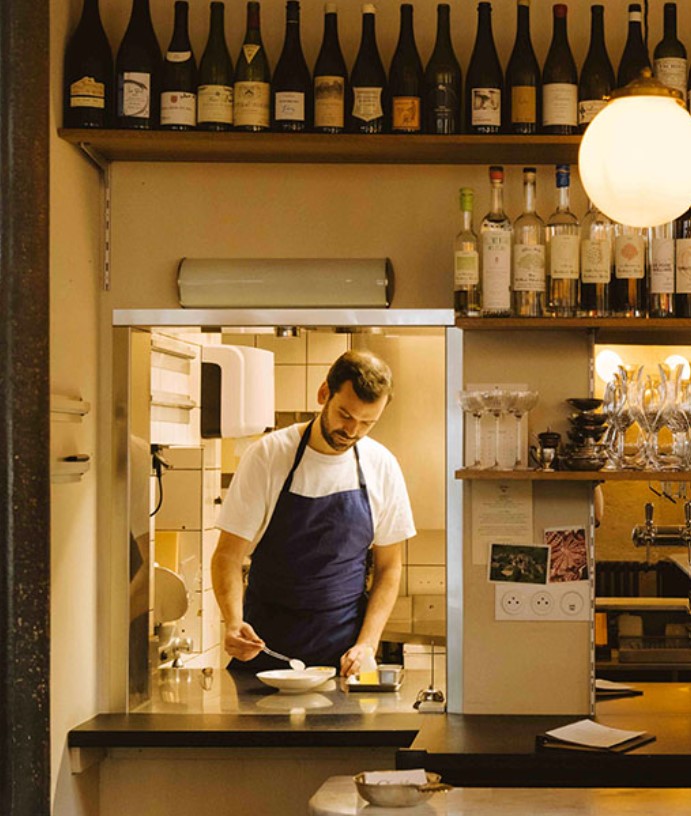There are many Thai dishes that diners around the world know and love, from tom yam kung to Massaman curry to phad thai. Still, Thai cuisine is much more deliciously diverse, especially as you travel through the various provinces around the country. A journey to the different regions of Thailand reveals a unique identity with distinct flavours. Such a realisation awaits in the Northeastern Thailand or so-called Isan region, known for its many spicy dishes from recipes passed down through the generations as part of its cultural heritage. Visitors to this corner of Thailand will discover a truly tantalising experience with every bite.
MICHELIN Guide recently spoke with an ultimate Isan food lover, Chef Chalee Kader of 100 Mahaseth (Bib Gourmand, MICHELIN Guide Thailand 2020 and 2021), where he presents new takes on Isan cuisine. He is our honoured guide, taking us on a sumptuously spicy tour for our taste buds through five classic Northeastern Thai dishes that will tempt you to explore Isan food even further.
“I love Isan food. When Thai people have Isan food, it’s usually when they get together and share, like after work or even during merit-making, which is a regular event in the northeast. What I like about eating Isan food is how it creates an atmosphere of community. That’s what inspired me to learn everything I can about Isan cuisine.”

Chef Kader makes regular trips to Isan. He visits local farms, hikes through the jungles, and experiences local village life to get a deeper understanding of Isan culture, as well as eat at local Isan restaurants. The more he learns, the more fascinated he gets.
“My trips to Isan are fun as well as eye-opening educational experiences for me. People in Isan understand how to preserve food. Their food culture is based in nature, eating what is in season. They have a unique way of seasoning, making the most of local ingredients. The more I explored, the more I realised the wealth of culinary knowledge Isan has to offer. So much so, it inspired me to bring some of those ingredients and techniques I learned about to 100 Mahaseth and create new approaches to Isan dishes, building on and enhancing those traditional flavours.”
And here are five classic Isan dishes you should try:

Som tam
“The som tam most people know is ‘papaya salad’, but actually som tam is not just papaya. It is taking vegetables or fruits that are in season, along with various spices and pounding them with a mortar and pestle. Add some chillies for heat, and for tartness, use limes or tamarind. Then you have a diverse som tam selection, including spicy long bean salad, spicy papaya and rice noodle salad, spicy fruit salad, and spicy pomelo salad. And at 100 Mahaseth, we have a som tam dish we call bak nat or som tam made from pineapple served with cockles. This shows you how versatile this dish can be.”

Soi Chu
“Soi chu is a popular dish in Isan, especially after a cow has been freshly slaughtered for various ceremonies or significant merit-making rituals. Different types of offal are thinly sliced and served with a dipping sauce made with phia or khi phia (a slightly bitter mixture containing a cow’s bile), giving the dish an interesting bitterness. The highlight is that this dish features raw organ meat. But for the 100 Mahaseth soi chu, we use only beef belly and liver, raw and thinly sliced, served with a bitter chim chaeo sauce, for flavours that are more accessible to more people.”

Cassia Curry
“People in Isan will use cassia leaves as a thickener or boil them soft to get rid of the bitterness. This is a popular dish to serve guests for various occasions. Our version doesn’t just use buffalo skin -- we also use oxtail for an even beefier flavour. We suggest eating it with tam maeuk (spicy coconilla salad) as the tartness cuts any oiliness from the buffalo skin. This is another dish we’ve made to be easier on more palates. There is also grilled beef tenderloin with a cassia curry sauce as a new menu item.”

Isan Sausage
“Isan sausage is a way to process and preserve food in the Northeast so it keeps longer and is easy to transport. There are many different types, including mam, which is made with blood and offal for a really full flavour. Isan sausages are made from pork and are similar to naem (fermented pork) or rice-stuffed sausage. It’s a very popular snack that many people enjoy. We do them a little differently at 100 Mahaseth. Instead of casings made of pig intestines, we debone chicken wings and stuff them with a sticky rice mixture. After drying them for three or four days to give them tartness, we grill them until the skin is crispy. It is another signature Isan dish here at the restaurant.”

Koi
“Koi is a tartare of raw meat, ground roasted rice, and chilli powder seasoned with fish sauce and lime juice. It’s very much like lab, except koi must be eaten fresh. If you add some cow bile, you get koi khom (bitter tartare). The trend now is to use different types of raw meats like beef, barking deer venison, wild boar, fish (such as carp or white-fleshed fish), and freshwater shrimp. At the restaurant, we serve both sour and bitter versions of beef koi. But we add a little twist, serving it like European steak tartare, with crisps. Except we don’t use potatoes. We use tripe. We soak it in vinegar to get rid of the smell and dry it out before frying it crisp to serve with the raw koi. It’s Isan steak tartare.”
In addition to these five classic Isan dishes, there are many more interesting dishes to try. The chef explains, “I want foreigners to see that we have a diverse culinary culture, beyond what they’ve come across before. We have more than tom yam, green curry, massaman, and phad thai. So many excellent, flavourful dishes that even Bangkokians and people from other provinces aren’t familiar with. Isan food goes beyond som tam, lab, and grilled chicken. There are so many other tempting, delicious dishes to enjoy.”

“The experiences from my Isan journeys did more than inspire me. It also introduced me to some of the highest quality Thai products and ingredients. Khokhun Phon Yang Kham beef from Sakhon Nakhon, Khon Kaen premium beef, or beef from Phon District, Khon Kaen Province. The wagyu beef from Surin Province is very good quality. Nong Khai has the Issan Rum distillery, making quality rum from sugar cane that is mainly exported to Europe. So at the restaurant, we support many local farmers and producers by sourcing high quality Thai beef and other ingredients to feature in our menu every day.”
Every dish reflects the society and lifestyle it comes from. Each plate tells a story about a cuisine’s heritage, traditional wisdom, and culture. It sure is a delicious way to learn, to discover food by travelling to their sources. Perhaps, visiting farms and orchards, experiencing local cultures firsthand could be the new eating and drinking popular dishes at tourist attractions?
And, not to forget that it also provides excellent opportunities to get a fuller picture of Thailand with unique, diverse activities and also to support a local economy while having a great time.
Hero photo: © Watsamon Tri-yasakda/ MICHELIN Guide Thailand





















